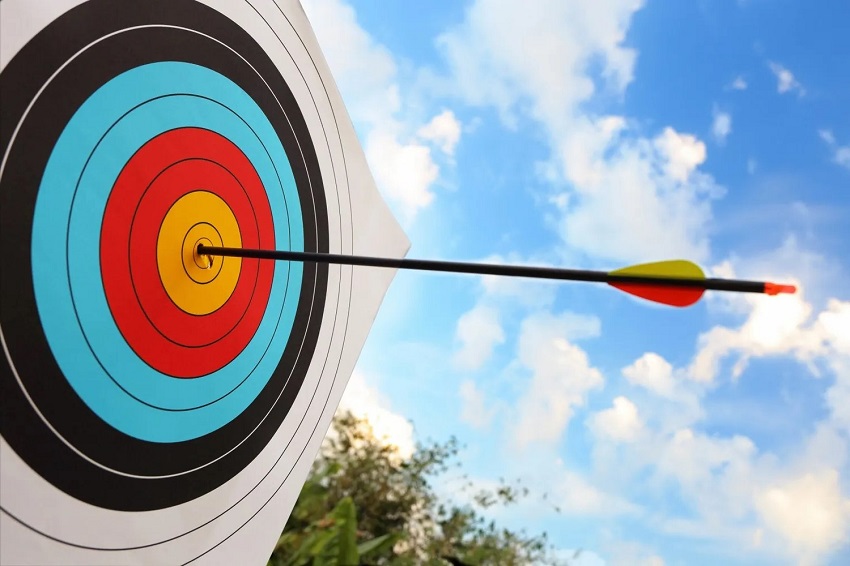A Brief History of Archery
Archery is one of the oldest known sports, with roots tracing back over 10,000 years. Ancient civilizations, including the Egyptians, Persians, Greeks, and Chinese, used bows and arrows for hunting and warfare. It wasn't just a weapon—it was a vital survival tool.
By the Middle Ages, archery had become a strategic force in warfare. The English longbow, for example, famously dominated battles like Agincourt. In Asia, mounted archers like the Mongols redefined tactics with their agility and precision.
Fast forward to today, archery has shed its militaristic identity and emerged as a refined sport, an art form, and even a meditative practice. It has gained popularity through pop culture icons like Katniss Everdeen and Hawkeye, inspiring a new generation to take up the bow.
Types of Archery
Before diving into your first lesson, it’s helpful to understand the different forms of archery. Each style offers unique techniques and experiences:
1. Target Archery
This is the most recognized form, especially in the Olympics. Archers shoot at stationary circular targets from fixed distances. It requires high precision and consistency.
2. Field Archery
Field archery is often practiced in wooded, outdoor areas. Archers walk through a course, shooting at targets placed at varying distances and elevations. It simulates real hunting conditions.
3. 3D Archery
Using life-sized foam animal targets, this type is popular among bowhunters and outdoor enthusiasts. It's commonly practiced on courses that mimic natural terrain.
4. Traditional Archery
This form strips down modern aids like sights and stabilizers. Longbows and recurve bows are often used to focus purely on form, instinct, and feel.
5. Bowhunting
An ethical and regulated form of hunting using a bow, this requires specialized training, equipment, and knowledge of wildlife.
6. Olympic Recurve and Compound Archery
In modern competitions, archers often use high-tech bows. The Olympic recurve is used in the Olympics, while compound archery—known for its mechanical cams and extreme accuracy—is seen in many competitive formats.
Why Archery? The Benefits Beyond the Bow
Archery offers a wide range of physical, mental, and emotional benefits:
🔹 Focus and Concentration
Archery demands a calm mind and focused attention. Each shot is a lesson in mindfulness and control.
🔹 Physical Fitness
While it may not seem physically intense, archery builds upper body strength, coordination, and balance. Holding and drawing a bow engages muscles in the arms, shoulders, back, and core.
🔹 Stress Relief
The meditative rhythm of drawing, aiming, and releasing can act as a mental reset. The outdoor setting often associated with archery also provides a calming environment.
🔹 Patience and Discipline
Perfecting your form takes time. Archery rewards consistency, making it ideal for developing patience and persistence.
🔹 Confidence and Personal Growth
Hitting your target—even once—can be a powerful boost in self-esteem. Progress is measurable, which makes it easy to track improvement and celebrate small victories.
Archery for Beginners: How to Get Started
If you’re intrigued by the world of archery, here’s how you can start your journey.
🏹 Step 1: Choose Your Bow
Start with a recurve bow or compound bow, depending on your interest. Recurve bows are simpler and great for beginners. Compound bows, while more complex, offer higher precision.
Tip: Visit a local archery shop or range to test different bows and get professional advice on draw weight, bow size, and arrow selection.
🏹 Step 2: Take a Lesson
Proper form is crucial. A certified instructor can teach you posture, grip, aim, and release techniques—saving you from developing bad habits early on.
🏹 Step 3: Safety First
Always practice with proper safety gear. Use an arm guard, finger tab or release aid, and never shoot without checking your surroundings. Safety is paramount in all forms of archery.
🏹 Step 4: Practice, Practice, Practice
Start with short distances and gradually increase the challenge. Focus on form and consistency rather than speed or power.
🏹 Step 5: Join a Community
Archery is more fun when shared. Local clubs and online forums are great places to meet others, enter competitions, or just get tips and motivation.
Essential Archery Gear Checklist
-
Bow (Recurve or Compound)
-
Arrows (Matched to your bow)
-
Quiver (To hold arrows)
-
Arm Guard and Finger Tab/Release Aid
-
Bow Stringer (for recurve bows)
-
Target or Range Access
Invest in quality gear from trusted brands and always maintain your equipment to ensure longevity and safety.
Archery in the Digital Age
Modern archers have access to online coaching, apps to track progress, and even virtual tournaments. Platforms like YouTube and Instagram are filled with tutorials, reviews, and community showcases.
You can also enhance your training with tech tools like:
-
Shot tracking apps
-
Form analysis through video recording
-
Online scoring platforms for virtual competitions
Final Thoughts: Why Archery Is More Than a Sport
Archery is a deeply personal journey. Whether you're shooting for recreation, competition, or inner peace, it offers something unique to everyone. It cultivates discipline, focus, and self-awareness in ways few sports can.
As you draw the bow and let the arrow fly, you're not just hitting a target—you're embracing an ancient tradition that has shaped civilizations, stories, and skills for millennia.
Ready to Take the Shot?
Whether you're looking to join a local club, build your backyard range, or dive into Olympic aspirations, archery has a place for you. Start today, and experience the powerful connection between the archer, the bow, and the target.


You must be logged in to post a comment.